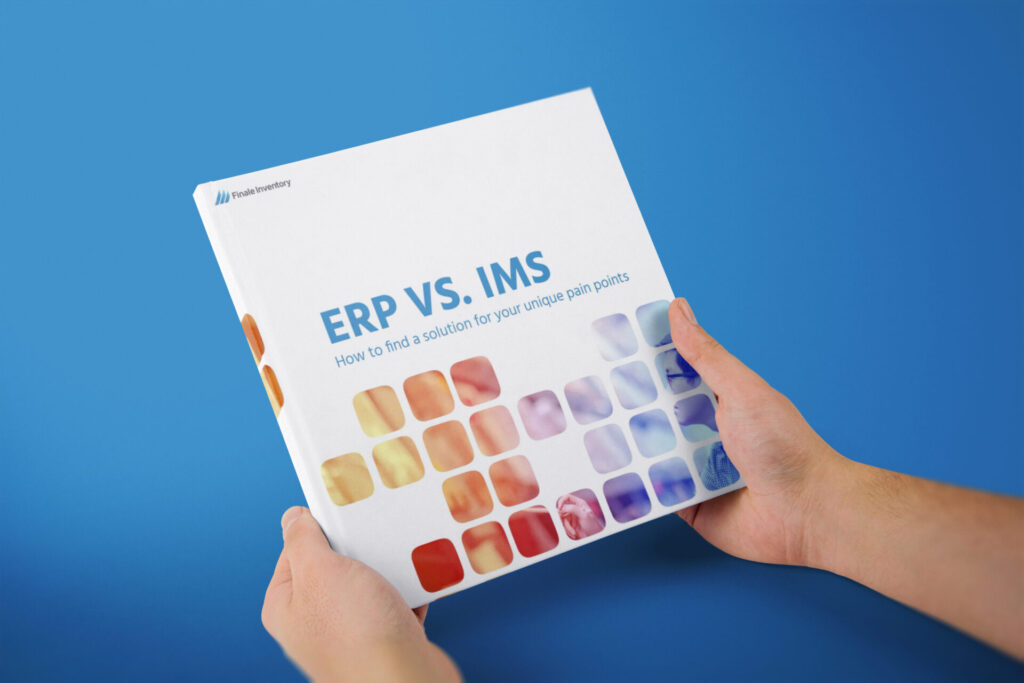Handling high inventory volumes can be a challenging task for businesses, especially those growing rapidly or dealing with fluctuating demand. Whether you are managing a large warehouse, multiple distribution centers, or an ecommerce business with a wide range of SKUs, it’s essential to have the right tools and strategies in place. This guide will cover practical methods for managing large inventories, including tracking, minimizing excess, and optimizing your processes.
Managing Bulk and Large Amounts of Inventory Overview
When dealing with high inventory volumes, efficiency is key. Without a proper system in place, it’s easy for things to slip through the cracks. This can lead to overstocking, understocking, and unnecessary overhead costs. Efficient inventory management allows you to streamline operations, avoid costly errors, and ensure that your inventory is where it needs to be when it’s needed.
One of the most effective solutions for handling bulk and large amounts of inventory is using an Inventory Management System (IMS). An IMS like Finale Inventory helps businesses automate and centralize inventory tasks, enabling them to track stock levels in real time, manage purchase orders, and maintain a smooth flow of goods through their warehouses. With the right software in place, managing even the largest inventories becomes manageable and scalable.
How Do You Keep Track of Large Inventory?
To keep track of large inventory, businesses often choose between two software options: an Inventory Management System (IMS) or an Enterprise Resource Planning (ERP) system. Both serve important roles in inventory management, but they differ in scope.
IMS vs. ERP
An IMS focuses specifically on inventory management, tracking stock levels, order fulfillment, and reordering processes. It’s ideal for businesses focused on ecommerce or warehousing, especially if their primary concern is managing large quantities of stock across multiple locations. An ERP, on the other hand, encompasses a broader range of business functions, including finance, human resources, and procurement. While an ERP (enterprise resource planning) system may offer inventory tracking as a feature, it’s typically not as specialized or robust as a dedicated IMS like Finale Inventory.
For businesses primarily concerned with inventory management, an IMS offers a more targeted and effective solution. Finale Inventory, for example, is specifically designed to help companies keep accurate records of their stock, automate processes, and optimize storage across various warehouses.
What Happens If Inventory Is Too High?
High inventory levels can be risky. Excess stock ties up capital, increases storage costs, and can even lead to product obsolescence. This is especially true for businesses with multiple warehouse locations. Without a system to manage inventory across different sites, some warehouses may overstock while others understock, leading to inefficiencies and potential lost sales.
An Inventory Management System like Finale Inventory can mitigate these risks. By tracking inventory levels across all warehouse locations in real-time, you can ensure that stock is distributed evenly and efficiently. If one location has an excess of a particular product, it can be quickly identified and redistributed to where it’s needed, preventing both shortages and overstocking.
High inventory can hurt your bottom line. Holding costs increase which eats away at profit margins.
How to Fix High Inventory
Fixing high inventory levels requires a proactive approach. Here are some strategies that can help:
- Sales Velocity: Understanding your product’s sales velocity – how quickly each item sells – is critical. A high sales velocity indicates a fast-moving product, while a low sales velocity may indicate excess or obsolete stock. By analyzing sales trends, you can adjust your inventory levels accordingly.
- Demand Forecasting: Predicting future demand based on historical data and trends helps you avoid over-ordering. Using tools like Finale Inventory, you can integrate sales and inventory data to create accurate forecasts that guide your purchasing decisions.
- Just-in-Time Ordering: Just-in-time (JIT) ordering ensures that inventory arrives exactly when it’s needed, reducing storage costs and minimizing excess stock. This strategy is especially effective when combined with an IMS like Finale Inventory, which automates reorder points and keeps stock at optimal levels.
- Lead Time: Lead time refers to the time it takes for an order to be delivered after it has been placed. A typical lead time can range from a few days to several weeks, depending on the supplier and product. To improve lead times, consider building strong relationships with suppliers, negotiating faster shipping options, or sourcing locally to reduce transit times. Reducing lead time can help you maintain optimal inventory levels and avoid overstocking by allowing for more frequent and smaller orders.
How to Manage Excess and Obsolete Inventory
Excess and obsolete inventory can take up valuable warehouse space and negatively impact your bottom line. However, with the right strategies, you can effectively manage and reduce these stockpiles.
- Discounting: Offering discounts on excess inventory can help move slow-selling items and free up warehouse space. This not only reduces storage costs but also helps recoup some of the initial investment.
- Bundling: Bundling excess inventory with more popular products can help increase sales while reducing excess stock. For example, offering a package deal with a high-selling item and an overstocked item can create a win-win situation for both you and your customers.
- Donation or Liquidation: In cases where inventory is truly obsolete, donating or liquidating the stock may be the best option. This helps you clear out space quickly while potentially benefiting from tax deductions or other incentives.
Using Finale Inventory, you can easily identify slow-moving or obsolete products and take appropriate action before they become a significant drain on your resources.

High Inventory Management Examples
Managing high inventory volumes becomes especially challenging for businesses engaged in omnichannel selling. When you’re selling across platforms like Amazon, Walmart, Overstock.com, eBay, and multiple Shopify accounts, maintaining accurate stock levels across all channels is essential. Without proper synchronization, issues can arise, such as overordering from suppliers due to apparent stock shortages in one channel, while other channels have ample supply.
For example, imagine a scenario where your Amazon store is showing low inventory levels for a particular product, prompting a reorder from your supplier. However, your inventory on Walmart or Shopify may have sufficient stock, but because the channels aren’t synced, you mistakenly overorder. This leads to excess stock, which ties up capital and increases storage costs. With Finale Inventory, you can centralize inventory management, ensuring that stock levels are accurately reflected across all your selling channels. This prevents overordering and allows for smarter purchasing decisions.
Another common issue in high-volume environments is dealing with products that have different SKUs or IDs from various suppliers. It’s not uncommon for the same item to be listed with different identifiers, causing confusion during reordering. Without realizing it, you may end up doubling your stock of the same product under different SKUs. Finale Inventory’s Product Lookup feature helps solve this problem by allowing you to consolidate these items. With this feature, you can easily track one product even if it has different SKUs, ensuring that your restocking is accurate and streamlined.
High inventory volumes can also result from customer returns. When returns aren’t properly accounted for and added back into stock, your inventory levels may appear lower than they actually are, leading to unnecessary reorders. Finale Inventory provides tools to efficiently manage returns, automatically updating stock levels as items are returned and processed. This ensures that your stock counts remain accurate and prevents overstocking due to mismanagement of returned items.
These are just a few examples of how businesses can face inventory challenges in a high-volume environment. Whether it’s due to omnichannel selling, multiple SKUs, or customer returns, Finale Inventory provides the features and flexibility needed to overcome these challenges and optimize inventory management.
Best Tools for High-Volume Inventory
When managing high inventory volumes, using the right tools is crucial. Here are some of the best tools for the job:
- Inventory Management: Finale Inventory
Finale Inventory offers powerful features for managing large inventories, including real-time tracking, multi-warehouse support, and automation of routine tasks like reorder points and purchase orders. It’s designed to scale with your business, making it an ideal choice for handling high inventory volumes. - Accounting: QuickBooks Online
QuickBooks Online integrates seamlessly with Finale Inventory to provide a complete picture of your business’s financial health. From tracking sales and expenses to managing payroll, QuickBooks ensures that your accounting stays in sync with your inventory operations. - Shipping and Labeling: ShipStation
ShipStation is a leading shipping software that simplifies the shipping process for businesses of all sizes. It integrates with Finale Inventory, allowing you to manage your inventory and shipping operations from one platform, ensuring orders are processed efficiently. - Marketplace Ads: GoTrellis
Gotrellis is a platform that helps you optimize your ads across multiple marketplaces, ensuring that your products are visible to the right audience. It’s a valuable tool for increasing sales and reducing excess inventory. - Dynamic Pricing: Profasee
Profasee offers dynamic pricing solutions that help you adjust your prices in real time based on market demand, competition, and other factors. This can help you optimize your pricing strategy and maximize profitability while managing large inventories.
Transform Your Inventory with Finale
Request a Free consultation (valued at $2,500) and let us help solve your biggest inventory management challenges with Finale Inventory. Experience the difference Finale Inventory can make for your business.







